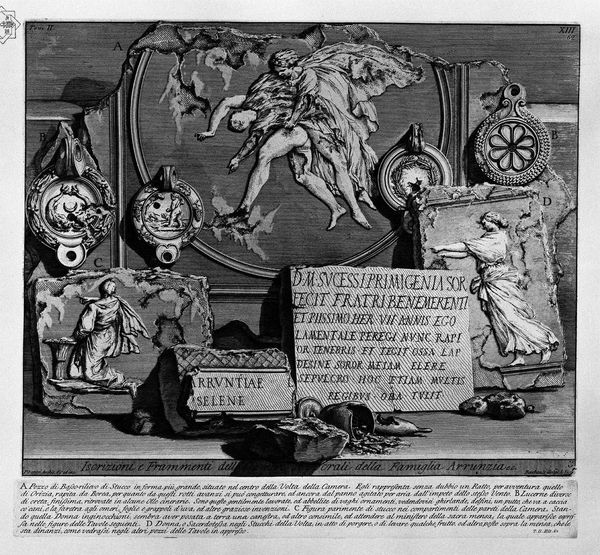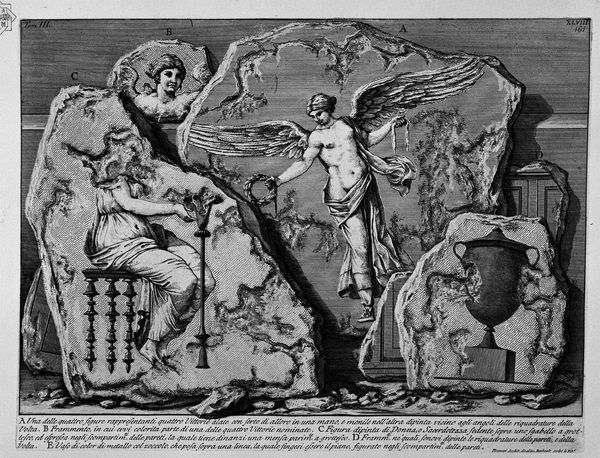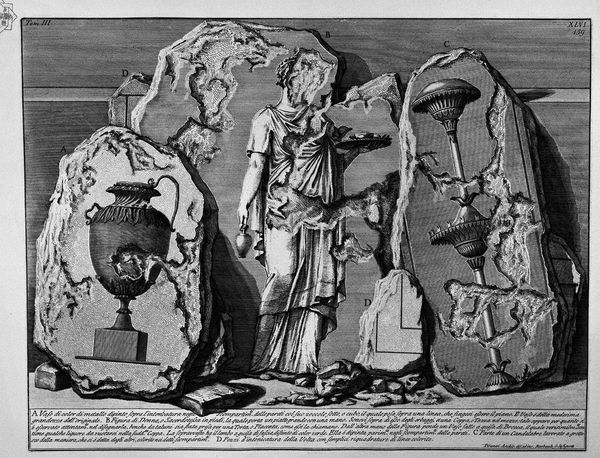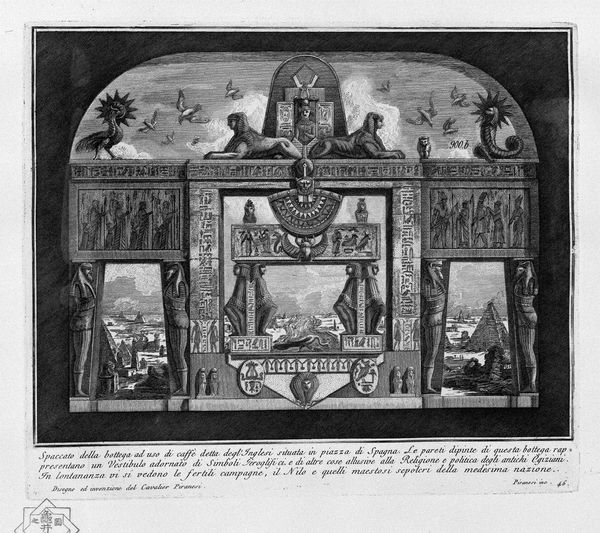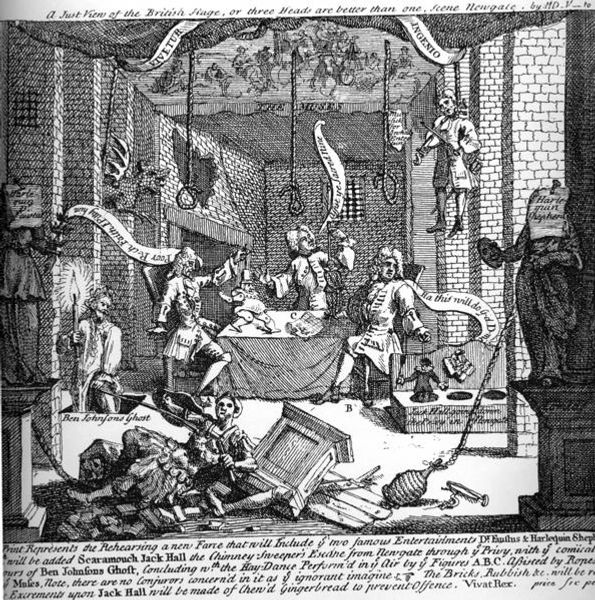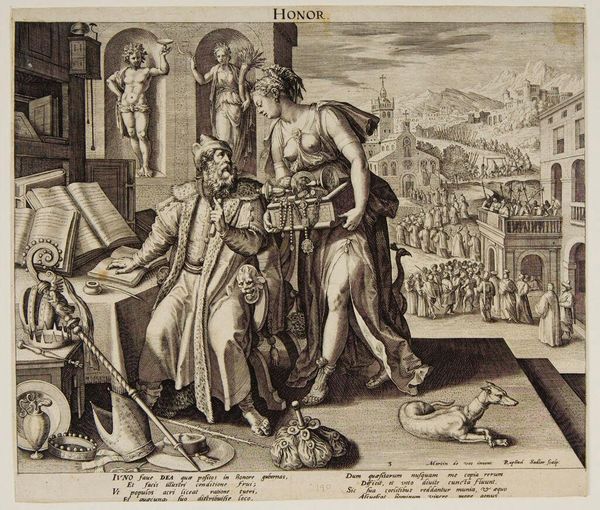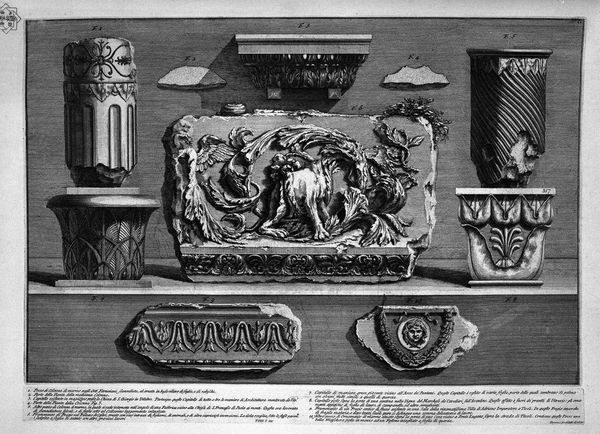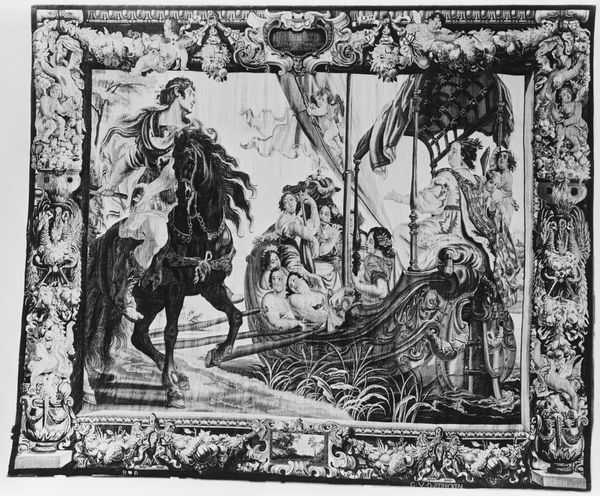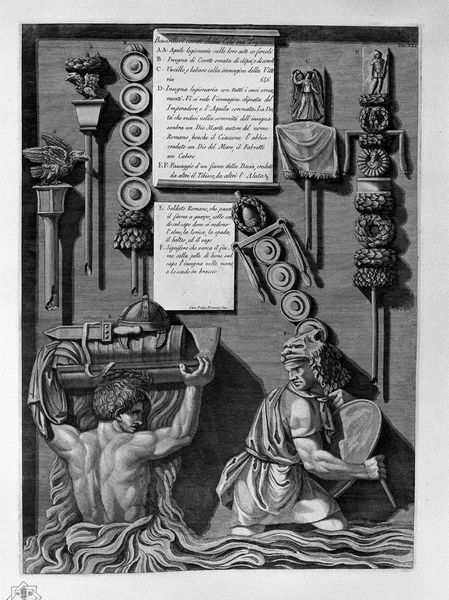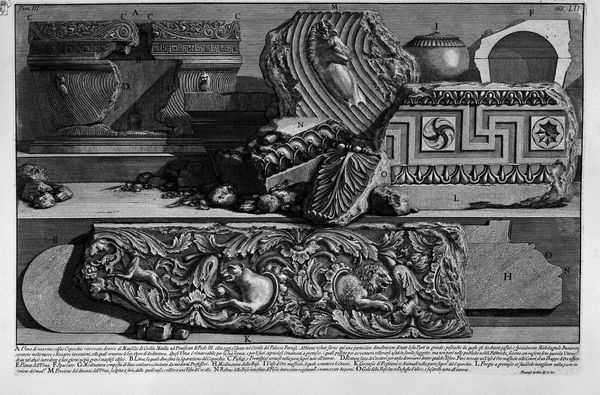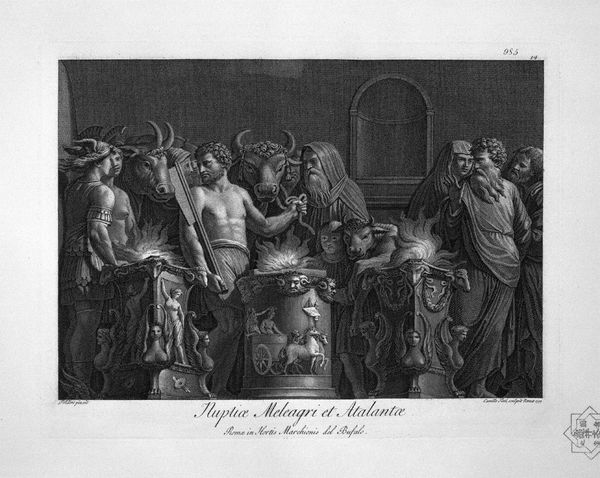
The Roman antiquities, t. 3, Plate XXIX. Fragments of sculptures and various objects found in burial chambers above.
0:00
0:00
print, engraving
# print
#
figuration
#
ancient-mediterranean
#
history-painting
#
engraving
Copyright: Public domain
Giovanni Battista Piranesi etched this plate of Roman antiquities in the 18th century. Fragments of sculptures and burial objects reveal a culture grappling with mortality and legacy. Note the winged figures adorning the corners of a cinerary urn, holding crowns. These figures echo motifs found in ancient Greek funerary art, where winged beings often symbolized the soul's ascent. The crowns suggest triumph over death, an idea pervasive in Roman imperial imagery, linking earthly power with divine favor. But observe, too, how these figures are 'framele' or ‘frail’, turned inwards in an act of martisia, of remorse. This gesture resonates across cultures and centuries, reappearing, for example, in medieval depictions of mourning saints. Perhaps these motifs tap into a collective memory, an archetypal expression of grief and hope, passed down through generations, each culture reinterpreting and imbuing them with new significance. The cyclical nature of these symbols underscores how cultural anxieties and aspirations continuously resurface, reminding us that even in fragments, the past remains a potent force.
Comments
No comments
Be the first to comment and join the conversation on the ultimate creative platform.
